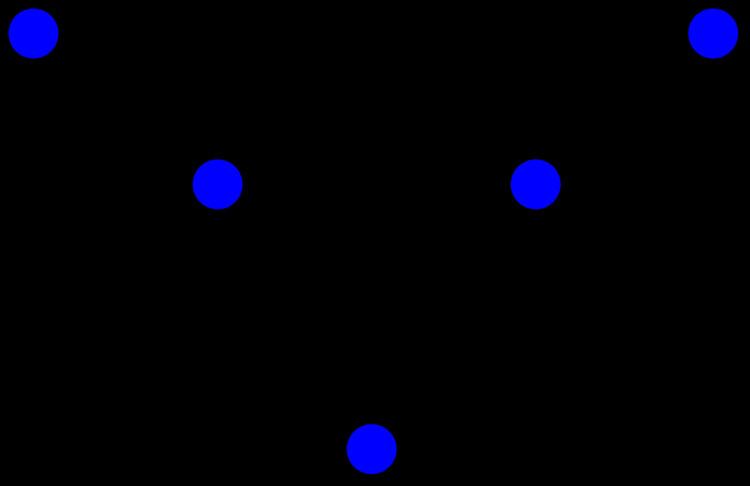Vertices 5 Radius 2 Girth 3 | Edges 5 Diameter 3 Automorphisms 2 (Z/2Z) | |
 | ||
In the mathematical field of graph theory, the bull graph is a planar undirected graph with 5 vertices and 5 edges, in the form of a triangle with two disjoint pendant edges.
Contents
It has chromatic number 3, chromatic index 3, radius 2, diameter 3 and girth 3. It is also a block graph, a split graph, an interval graph, a claw-free graph, a 1-vertex-connected graph and a 1-edge-connected graph.
Bull-free graphs
A graph is bull-free if it has no bull as an induced subgraph. The triangle-free graphs are bull-free graphs, since every bull contains a triangle. The strong perfect graph theorem was proven for bull-free graphs long before its proof for general graphs, and a polynomial time recognition algorithm for Bull-free perfect graphs is known.
Maria Chudnovsky and Shmuel Safra have studied bull-free graphs more generally, showing that any such graph must have either a large clique or a large independent set (that is, the Erdős–Hajnal conjecture holds for the bull graph), and developing a general structure theory for these graphs.
Chromatic and characteristic polynomial
The chromatic polynomial of the bull graph is
Its characteristic polynomial is
Its Tutte polynomial is
